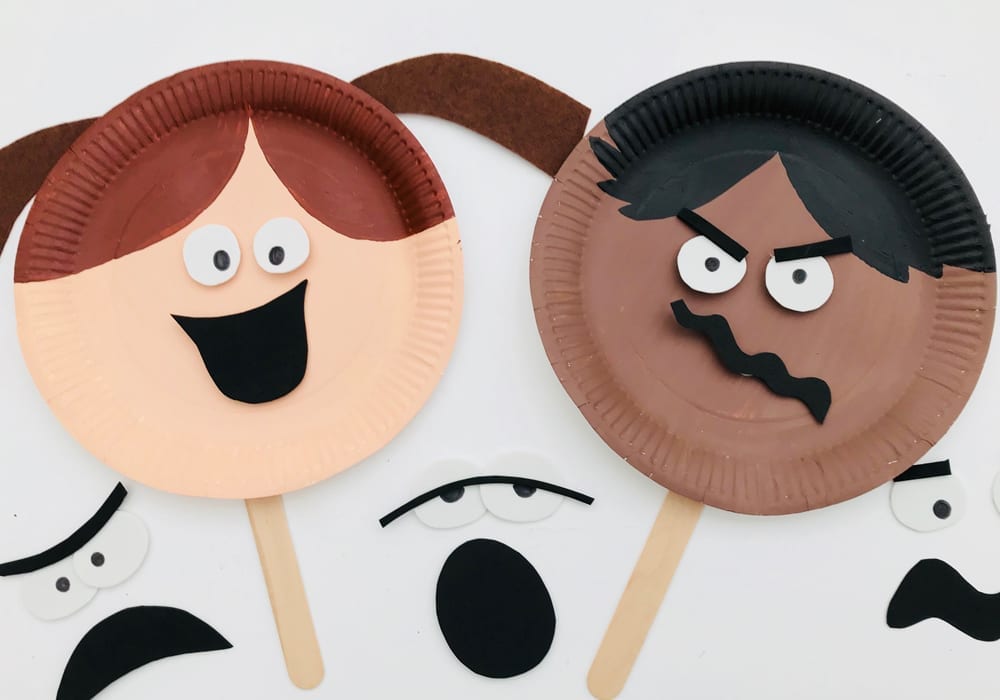Playtime Learning Emotions Activity
Play with these paper plate faces and help your child to recognise different emotions. Let them name the feelings that they might experience every day.
You can swap and change the expressions on each plate. Play around with the different feelings together until your child understands them all. This emotions activity can help your child be more aware of their own feelings and able to express them in words.
Summary:
Time: 15 minutes
Age: Toddlers to Little kids
Curriculum: Personal Social and Health Education (PHSE)
Skills: Naming and exploring feelings
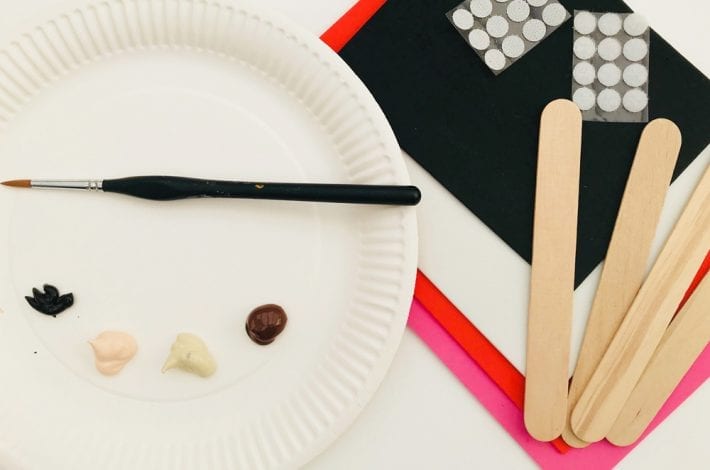
You will need:
- Paper plates
- Paints – we prefer acrylics.
- Paint brush
- Foam sheets, felt or card (black and white) – find foam sheets on Amazon here.
- Velcro dots – find on Amazon here.
- Wooden popsicle sticks – find on Amazon here.
Extending the activity
- Free printable worksheet: ‘Our faces show our feelings’.

Step 1: Paint your plates
Start by painting paper plates all over, with a skin tone colour.
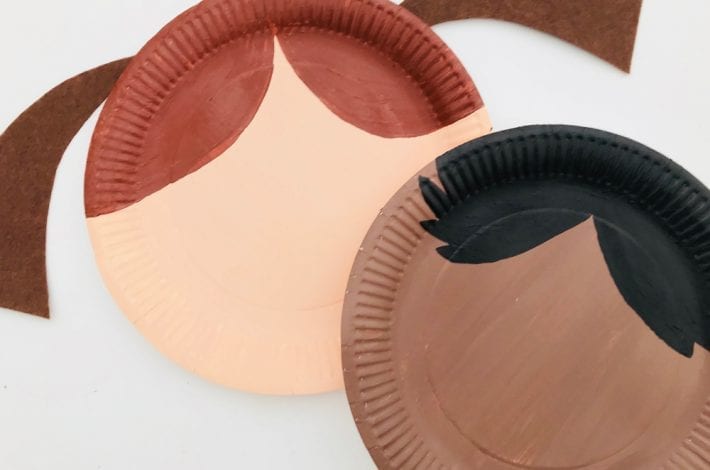
Step 2: Paint on some hair
When your paint is dry, paint on some hair.
You can also cut out pony tails and pig tails from felt and glue them onto the backs of your plates. We did this here with our pigtails.
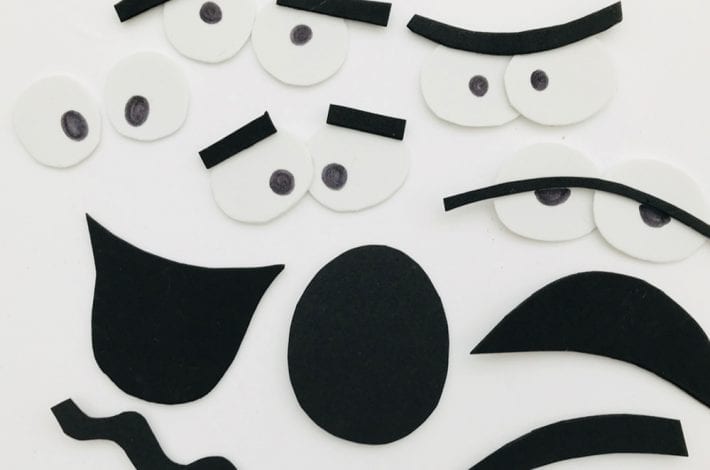
Step 3: Cut out some eyes and mouths
Take some white and black foam, felt or card. Cut out different eye shapes and mouth shapes.
Think what eyes and mouths look like when we are sad or shocked or cross. That way you can cut out lots of different expressions.

Step 4: Stick on velcro dots
Stick down two velcro dots onto your paper plate faces, where the eyes will be.
Stick down one velcro dot where the mouth will be.
Then stick velcro dots onto the back of each eye and mouth shape too.
Finally glue or tape a wooden popsicle stick to the back of your plates to make them into puppets.
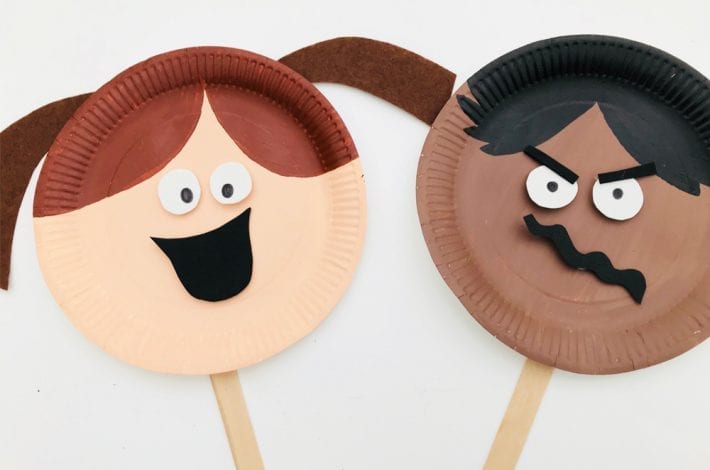
Play the fun emotions activity
Name an emotion (such as: happy, sad, angry, shocked, worried or scared). Ask your child to choose some eyes and a mouth to place onto the face to show that feeling.
Can they make an expression with their face too to show that emotion?
Repeat the activity for lots of different emotions.
Reverse the activity
You could reverse the game by starting with lots of different scenarios. They could be things like ‘It’s my birthday and I have just opened a really cool present’.
Or ‘My friend said she didn’t want to play with me’.
How would your child feel in each situation?
Can they choose eyes and mouths to make their faces show this emotion?
If it’s a negative emotion, what can they do to make themselves feel happy again?
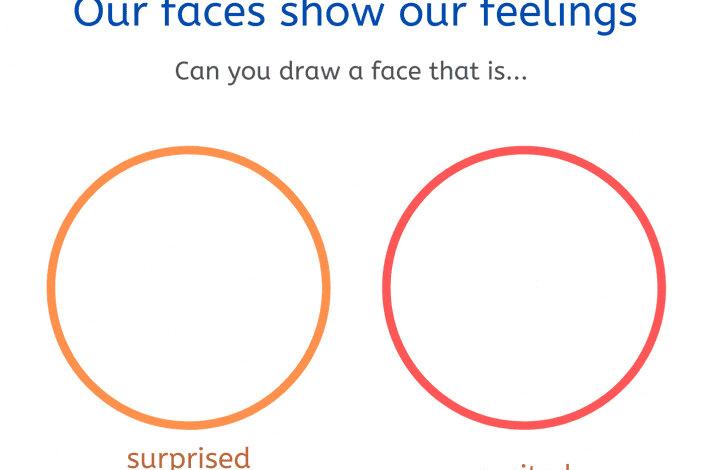
Extending the activity
After your child understands different emotions, expressions and scenarios, you can extend the game.
They can draw out the expressions themselves.
We’ve provided a free Printable Worksheet here to help. It has blank circles on it that they can turn into faces. Can they draw features on the faces to show different emotions?
You can find the worksheet here: ‘Our faces show our feelings’.
Why is it important to teach children about emotions?
Talking about feelings and emotions is important for children of all ages. Even from an early age it can feel frightening or unsettling to experience ‘big feelings’.
Talking about them and recognising them can make them normal. It will help open up a dialogue about their emotions.
Being aware of feelings and why they get them, can help them learn how to control their reactions to strong emotions in the future. The first step is to be able to recognise and label them. This emotions activity is a fun way to get started.
This post may contain some affiliate links. This means that if you click to make a purchase that we may earn a small commission at no extra cost to you.

